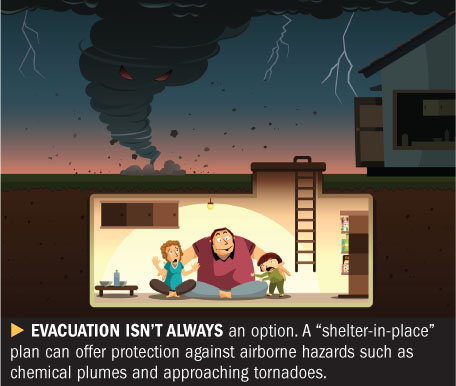The first priority of any emergency plan for a workplace is saving lives: getting people to safety as quickly as possible. Fire drills have taught us that when the fire alarm sounds, everyone should quickly walk to the nearest exit to evacuate the building.
 Evacuation, however, is not the only protective action for which you need to plan. What would you do if there were an approaching tornado or a chemical plume drifting toward your building? Or civil unrest in the streets? “Shelter-in-place” plans also should be an important part of your emergency procedures.
Evacuation, however, is not the only protective action for which you need to plan. What would you do if there were an approaching tornado or a chemical plume drifting toward your building? Or civil unrest in the streets? “Shelter-in-place” plans also should be an important part of your emergency procedures.
GET TIME ON YOUR SIDE
Recommended For You
Want to continue reading?
Become a Free PropertyCasualty360 Digital Reader
Your access to unlimited PropertyCasualty360 content isn’t changing.
Once you are an ALM digital member, you’ll receive:
- Breaking insurance news and analysis, on-site and via our newsletters and custom alerts
- Weekly Insurance Speak podcast featuring exclusive interviews with industry leaders
- Educational webcasts, white papers, and ebooks from industry thought leaders
- Critical converage of the employee benefits and financial advisory markets on our other ALM sites, BenefitsPRO and ThinkAdvisor
Already have an account? Sign In Now
© 2025 ALM Global, LLC, All Rights Reserved. Request academic re-use from www.copyright.com. All other uses, submit a request to [email protected]. For more information visit Asset & Logo Licensing.








